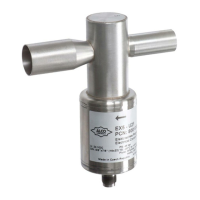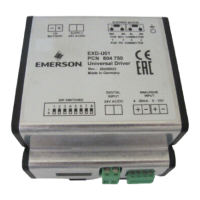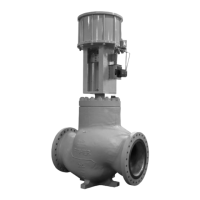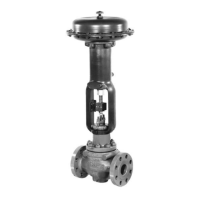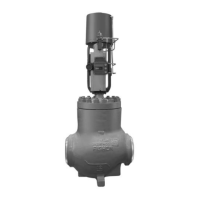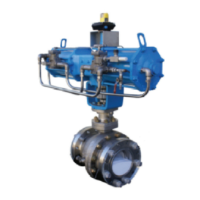184 EZMotion User/Programming Guide
www.controltechniques.com Revision: A8
home position. This is how EZMotion worked in and prior to A8 firmware (previous to the release of this feature). If clear, the
Absolute Position Mode parameters will remain unavailable on the Absolute Position View.
If this parameter is TRUE, EZMotion will internally calculate the correct feedback position of the machine in user units based on a
previously defined home position and the position feedback from the absolute feedback device. The previous sentence is valid only
if the system has been previously homed (either using a homing routine or the DefineHome function). The Absolute Position Mode
setting then determines the method used for calculating the position feedback on power-up or after a warm-start (see Absolute
Position Mode).
Absolute Position Mode
AbsPosnMode
This parameter is used to define how the machine position is calculated on power-up, based on the position feedback from the
absolute encoder, and the stored absolute home position. Options can be either One-Sided Mode, or Two-Sided Mode.
One-Sided indicates to EZMotion that the application will use the entire resolution of the multi-turn absolute encoder on the positive
side of the absolute home position. This allows maximum travel in one direction without reaching the rollover point of the absolute
feedback device. If the motor travels in the negative direction from the absolute home position, or more than the maximum resolution
of the encoder in the positive direction in this scenario, the machine position likely will not be correctly calculated on the subsequent
power-up.
Two-Sided indicates that the entire resolution of the multi-turn absolute encoder is to be evenly distributed on both sides of the
absolute home position. This allows for travel in both directions from the absolute home position and still EZMotion can correctly
calculate the machine position on power-up. If the motor travels more than half the maximum resolution of the absolute feedback
device in one direction from the absolute home position, the machine position likely will not be correctly calculated on the
subsequent power-up.
For examples on One-Sided or Two-Sided Modes, see the Absolute Position View section of this manual.
Accelerating
Accelerating
This source is active when EZMotion is executing an acceleration ramp. A normal index consists of 3 segments: Accelerating, At
Velocity, and Decelerating. The Accelerating source will be set (active) during this acceleration segment regardless of whether the
motor is speeding up or slowing down. Therefore, this source can sometimes be active when the motor is decelerating. This could
be true when compounding indexes together.
Acceleration Type
AccelType
This parameter is used to select the accel/decel type for all motion (homes, jogs and indexes). The “S-Curve” ramps offer the
smoothest motion, but lead to higher peak accel/decel rates. “Linear” ramps have the lowest peak accel/decel rates but they are the
least smooth ramp type. “5/8 S-Curve” ramps and “1/4 S-Curve” ramps use smoothing at the beginning and end of the ramp but
have constant (linear) accel rates in the middle of their profiles. The “5/8 S-Curve” is less smooth than the “S-Curve” but smoother
than the “1/4 S-Curve”. S-Curve accelerations are very useful on machines where product slip is a problem. They are also useful
when smooth machine operation is critical. Linear ramps are useful in applications where low peak torque is critical. Below is a
comparison of the 4 ramp types:
• S-Curve: Peak Accel = 2 x Average Accel
• 5/8 S-Curve: Peak Accel = 1.4545 x Average Accel
• 1/4 S-Curve: Peak Accel = 1.142857 x Average Accel
• Linear: Peak Accel = Average Accel
Acceleration Decimal Places
AccelUnits.Decimal
This parameter is the decimal point location for all real-time accel./decel. ramps.
Invert Acceleration Units
AccelUnits.InvertAccel
When enabled, all accelerate/decelerate units will be inverted, or put another way, revs/min/ms becomes ms/rev/min. For example,
acceleration in units of rev/min/ms would be displayed as ms/rev/min after it is inverted. This feature allows users to enter
accelerate/decelerate values in the units that make the most sense to them. Some prefer to think in terms of in/s/s while others
prefer ms/rev/min.
Units Name
AccelUnits.Name
This is a 6-character name for the acceleration user units you want to use in your application.

